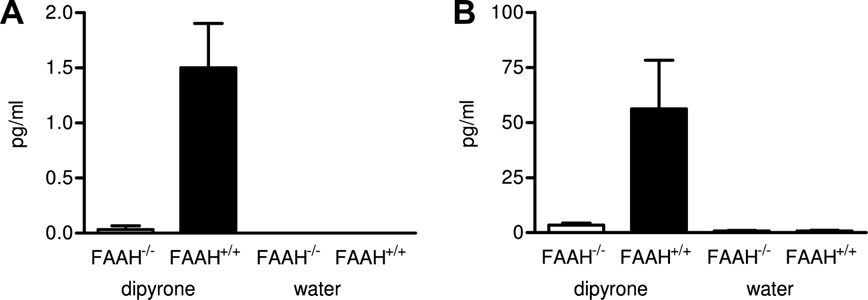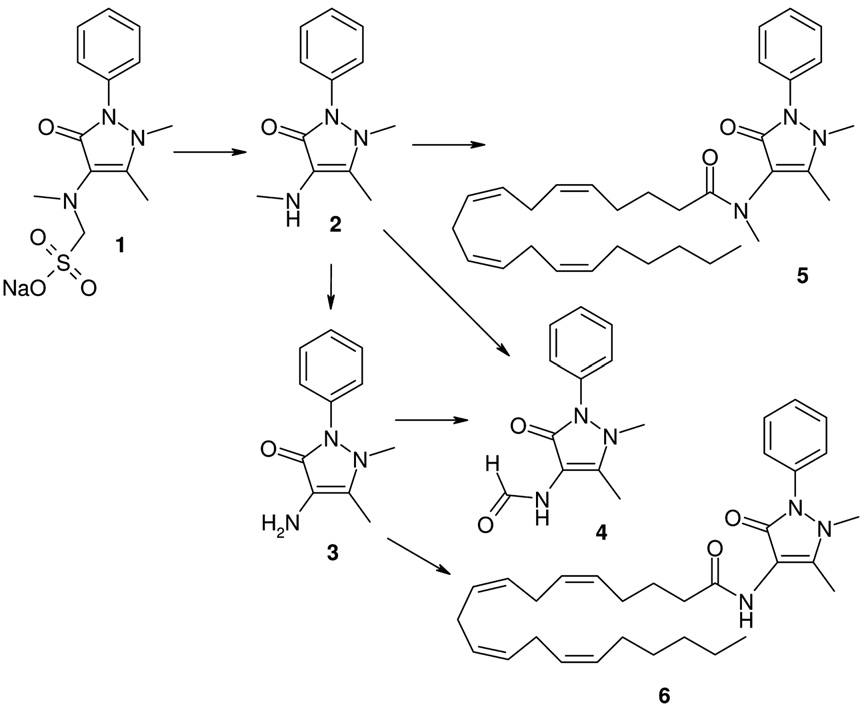Dipyrone
CAS number: 68-89-3
Dipyrone, also known as metamizole, is a pain reliever (analgesic) and fever reducer (antipyretic) that is used to treat moderate to severe pain and fever. It is available in various forms like oral tablets, suppositories, and injections. While widely used in many countries, it has been banned or restricted in some, including the United States, due to concerns about potentially serious side effects like agranulocytosis (a severe reduction in white blood cells).
Related images

Concentrations of 5 (A) and 6 (B) in the brain of wild-type mice (FAAH+/+) and of FAAH knockout mice (FAAHÀ/À) after administration of dipyrone or water for five days (n = 3 mice/group, mean SEM).
Related Questions and Answers
A: Dipyrone is completely hydrolyzed to 4-MAA in the peripheral tissue, as confirmed by mass spectrometry. This local hydrolysis is significant because 4-MAA is the active metabolite responsible for the analgesic effect of dipyrone, suggesting that the local metabolism of dipyrone to 4-MAA is essential for its pain-relieving properties.
A: The local antihyperalgesic effect of dipyrone is mediated by its hydrolyzed bioactive form, 4-MAA, and depends on the activation of CB2 and kappa-opioid receptors. This suggests a possible interaction between the cannabinoid and opioid systems in peripheral tissue, which contributes to the analgesic effect of dipyrone.
A: Dipyrone has been shown to have an analgesic effect superior to placebo and similar to paracetamol in the postoperative period of tonsillectomy in children. It appears to be suitable for use in children. However, due to the scarcity of randomized clinical trials evaluating its analgesic effect in this age group, more well-designed studies are needed to establish its role in postoperative pain management. The risk of agranulocytosis, while real, is considered low, especially in Latin America, making dipyrone a potentially valuable option for postoperative pain relief in low-income countries where cost and availability are significant factors.
A: The study found that dipyrone and its metabolites did not exhibit estrogenic or antiestrogenic activity in either in vivo or in vitro assays. In the in vivo uterotrophic assay, dipyrone did not increase uterine weight at any tested dose (50, 100, and 200 mg/kg/day), indicating the absence of estrogenic activity. Additionally, co-administration of dipyrone with ethynylestradiol (EE) did not block the estrogenic action of EE, indicating the absence of antiestrogenic activity. In the in vitro Yeast Estrogen Screening (YES) assay, dipyrone and its metabolites did not demonstrate estrogen agonistic or antagonistic properties. The conclusion is that dipyrone and its metabolites do not produce (anti)estrogenic effects in the tested models.
